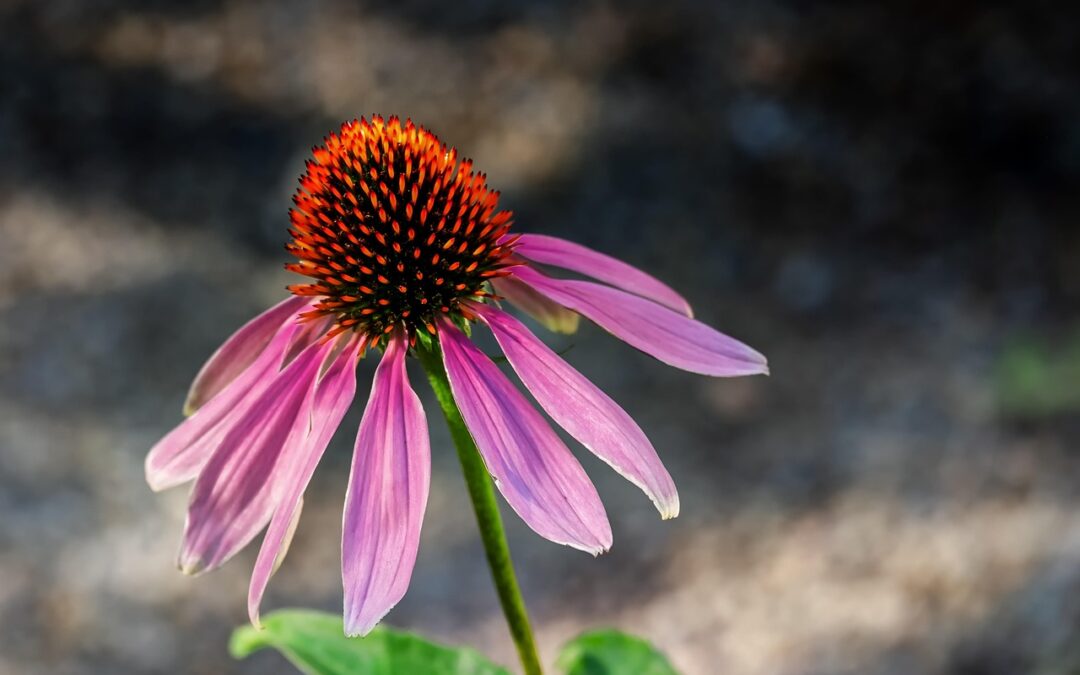
Purple Coneflower, Echinacea purpurea, is an iconic North American perennial celebrated for its large, daisy-like blooms and sturdy, upright habit. Blooming from early summer into fall, its rosy-purple petals surround a prominent, spiky central cone—both a visual focal point in the garden and a valuable food source for pollinators. Highly adaptable and low-maintenance, Purple Coneflower is a summer staple for Southeast Wisconsin landscapes, offering color continuity, wildlife benefits, and versatile design uses.
Key Characteristics
Cultural Requirements
-
Light
-
Thrives in full sun (minimum 6–8 hours daily).
-
Tolerates light afternoon shade, but best flowering occurs under direct sun.
-
Soil
-
Water
-
Establish with regular watering during the first season.
-
Once established, moderately drought-tolerant; supplemental water during prolonged dry spells encourages larger blooms.
-
Hardiness
Landscape Uses & Companion Plants
Seasonal Care & Maintenance
-
Planting & Division
-
Deadheading & Seed Management
-
Remove spent blooms to promote continued flowering and tidy appearance.
-
Leave some seed heads in autumn for winter interest and bird forage; alternatively, collect seeds for spring sowing.
-
Fertilization
-
Light feeder: apply a balanced, slow-release granular fertilizer in early spring.
-
Overfertilization can cause excessive foliage at the expense of blooms.
-
Pest & Disease
-
Winter Protection
-
Optional: after frost, leave stems standing to protect crowns and provide wildlife habitat.
-
In early spring, cut back dead stems to ground level before new growth emerges.
Ecological & Garden Benefits
-
Pollinator Haven: Its abundant nectar and pollen support bees, butterflies, and beneficial insects throughout summer.
-
Wildlife Value: Birds feast on seed heads in winter, adding seasonal interest and ecological function.
-
Low-Maintenance Performer: Tolerant of heat, drought, and a range of soil types, Purple Coneflower requires minimal care once established.
Conclusion & Availability
With its bold, long-lasting blooms, wildlife-friendly attributes, and effortless charm, Purple Coneflower (Echinacea purpurea) stands out as a resilient workhorse in Southeast Wisconsin gardens. Ready to bring this summer superstar home? Visit Heritage Hill Nursery in New Berlin or explore our online store to select premium Echinacea purpurea plants—guaranteed to brighten borders, attract pollinators, and sustain year-round interest.
We may not have this specific flower in stock, but check out the ECHINACEA PURPUREA `HAPPY STAR` here!
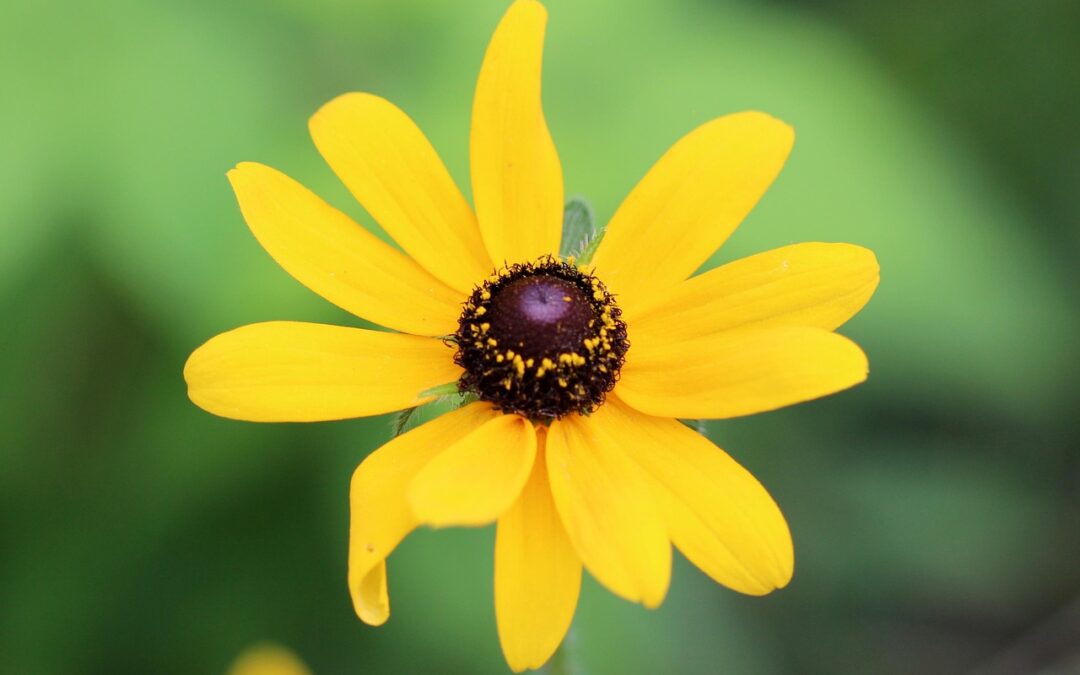
Black-eyed Susan (Rudbeckia hirta) is one of North America’s most beloved wildflowers, celebrated for its cheerful golden-yellow petals surrounding a dark chocolate-brown center. This classic daisy-like perennial shines in cottage gardens, prairie restorations, and mixed borders, offering up months of bright color from mid-summer into fall. Renowned for its adaptability and low-maintenance habits, Black-eyed Susan is a must-have for Southeast Wisconsin gardeners seeking long-lasting bloom, wildlife value, and ease of care.
Key Characteristics
-
Bloom Time & Flowers
-
Flowers appear from July through October, peaking in late summer
-
Each 2–3″ bloom features a contrasting dark cone (“eye”) encircled by 8–12 golden rays
-
Flowers open sequentially, keeping the plant in continuous bloom for weeks
-
Foliage & Habit
-
Erect stems reach 2–3 ft tall, supporting blooms well above foliage
-
Leaves are coarse-textured, lanceolate to ovate, and may be slightly hairy
-
Forms tidy clumps 1–2 ft wide; self-sows readily in ideal conditions
-
Wildlife Appeal
-
Nectar source for bees, butterflies, and beneficial insects
-
Seed heads feed goldfinches and other small songbirds in autumn
Cultural Requirements
-
Light
-
Thrives in full sun (at least 6 hours daily) for best flowering
-
Tolerates light afternoon shade, though blooms may be sparser
-
Soil
-
Performs in average, well-drained soils; tolerates poor or dry sites
-
Avoid heavy clay or waterlogged soils—amend with compost for better drainage
-
Water
-
Hardiness
Landscape Uses & Companion Plants
-
Cottage & Cutting Gardens
-
Combine with Shasta Daisy (Leucanthemum × superbum), Coreopsis (Coreopsis verticillata), and Salvia (Salvia nemorosa) for a cheerful, old-fashioned palette.
-
Stems make excellent cut blooms—ideal for summer bouquets.
-
Prairie & Meadow Restorations
-
Works seamlessly with native grasses like Little Bluestem (Schizachyrium scoparium) and Switchgrass (Panicum virgatum).
-
Pair with Tall Coneflower (Echinacea purpurea) and New England Aster (Symphyotrichum novae-angliae) for layered late-season interest.
-
Pollinator Gardens
-
Nectar and pollen attract butterflies, bees, and hoverflies.
-
Leave seed heads intact into winter for birds and beneficial insect habitat.
-
Borders & Mass Plantings
Seasonal Care & Maintenance
-
Division & Propagation
-
Deadheading & Tidy-Up
-
Remove spent blooms to encourage additional flowering and maintain neat appearance.
-
Alternatively, leave some seed heads for natural reseeding and winter interest.
-
Fertilization
-
Low feeder: apply a light layer of compost or balanced slow-release fertilizer in spring.
-
Excessive nitrogen can lead to floppy growth, so avoid high-nitrogen feeds.
-
Pest & Disease Management
-
Winter Protection
-
In late fall, cut back stems to just above ground or leave standing for habitat value.
-
Apply a 1–2″ layer of mulch over the crown in colder microclimates to prevent heaving.
Ecological & Garden Benefits
-
Wildlife Magnet: Dual role as pollinator nectar source and seed provider for birds.
-
Resilient Performer: Adapts to a range of conditions—from dry soils to heat—and requires minimal upkeep.
-
Season-Long Interest: A bright summer show that transitions into structural seed heads for fall and winter texture.
Conclusion & Availability
Black-eyed Susan (Rudbeckia hirta) embodies the best of summer gardens: cheerful color, effortless care, and wildlife value. Whether you’re restoring a native prairie patch, brightening a mixed border, or simply seeking reliable summer blooms, this classic perennial delivers year after year.
Ready to welcome Black-eyed Susan into your Southeast Wisconsin garden?
Stop by Heritage Hill Nursery in New Berlin or browse our online store to select healthy clumps and explore companion plants that will make your garden sing all season long!
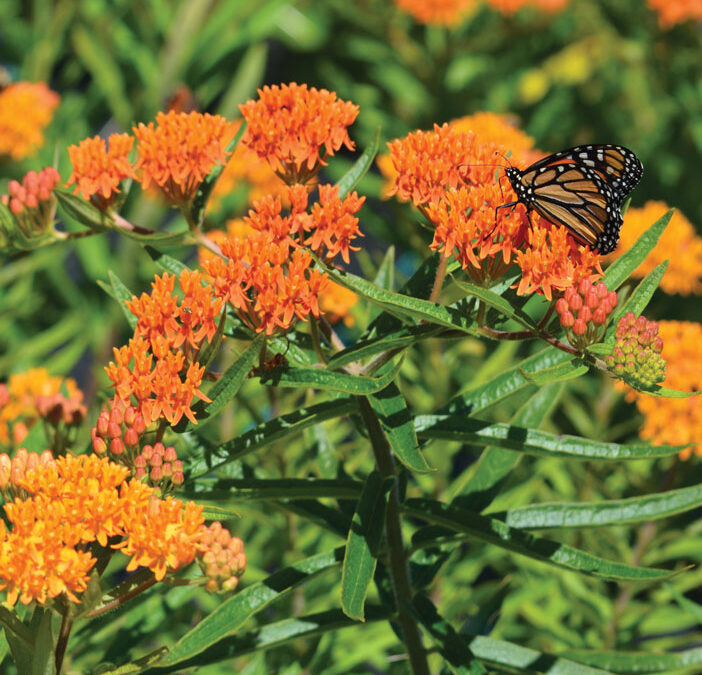
Butterfly Weed, or Asclepias tuberosa, is a vibrant, perennial native prized for its blazing clusters of orange blossoms and remarkable appeal to pollinators. Often called “Orange Milkweed,” this sun-loving beauty thrives in poor, well-drained soils and brings a burst of color to butterfly gardens, prairie restorations, and mixed borders from late spring through summer. Beyond its ornamental value, Butterfly Weed is indispensable for monarch butterflies—their larvae feed exclusively on milkweeds—making it a cornerstone species for wildlife-friendly landscapes in Southeast Wisconsin.
Key Characteristics
-
Flower & Bloom Time
-
Showy umbels of 10–50 bright orange to reddish-orange flowers
-
Blooms from late May through July, with potential for rebloom under ideal conditions
-
Fragrant nectar guides attract a host of butterflies, bees, and hummingbirds
-
Foliage & Form
-
Erect, clump-forming habit reaching 1–2 ft tall and wide
-
Smooth, lanceolate leaves (3–6 in long) arranged alternately along sturdy stems
-
Leaves may take on a bluish-green hue in full sun, adding textural contrast
-
Root System
Cultural Requirements
-
Light
-
Soil
-
Prefers well-drained, sandy or rocky soils
-
Tolerates poor, dry soils; struggles in heavy clay or poorly drained sites
-
Incorporate grit or coarse sand at planting for optimal drainage
-
Water
-
Drought-tolerant once roots develop (2–3 months)
-
Water regularly during establishment; thereafter, supplemental water only in extreme drought
-
Hardiness
Landscape Uses & Companion Plants
-
Pollinator & Butterfly Gardens
-
Attracts monarchs, fritillaries, swallowtails, and native bees
-
Plant in groups of five or more for maximum visual impact and nectar availability
-
Prairie & Meadow Restorations
-
Blends seamlessly with native grasses (e.g., Little Bluestem, Schizachyrium scoparium)
-
Complements other prairie forbs such as Purple Coneflower (Echinacea purpurea), Black-eyed Susan (Rudbeckia hirta), and Wild Bergamot (Monarda fistulosa)
-
Mixed Perennial Borders
-
Pair with cool-season bloomers (e.g., Columbine Aquilegia canadensis) for sequential interest
-
Contrast with fine-textured sedges (e.g., Pennsylvania Sedge Carex pensylvanica)
-
Dry Sunny Beds & Rock Gardens
Seasonal Care & Maintenance
-
Planting & Division
-
Best planted in spring after last frost; space 12–18″ apart
-
Avoid frequent division—disturbing tuberous roots can reduce vigor
-
To propagate, collect seed pods in late summer and sow fresh in fall or stratify for spring planting
-
Deadheading & Staking
-
Fertilization
-
Pest & Disease Management
-
Relatively pest-free; occasional aphids can be managed with a strong spray of water or insecticidal soap
-
Resistant to deer and rabbits due to milky sap
-
Good air circulation prevents fungal issues—avoid overhead watering
-
Winter Care
-
After foliage dies back, cut stems to ground level or mulch lightly to protect roots in colder microclimates
-
Remove heavy mulch in early spring to allow new shoots to emerge unimpeded
Ecological Benefits
-
Monarch Conservation: As a true milkweed, Butterfly Weed is crucial for monarch larvae, helping strengthen declining butterfly populations.
-
Pollinator Magnet: Beyond monarchs, its flowers feed swallowtails, skippers, hummingbirds, and a variety of native bees.
-
Erosion Control: Deep, fibrous roots stabilize sandy or gravelly soils on slopes and embankments.
Conclusion & Availability
Butterfly Weed (Asclepias tuberosa) shines with its fiery blooms, ecological value, and ease of care—making it an essential addition to any Southeast Wisconsin garden. Whether you’re restoring a prairie pocket, enhancing a pollinator haven, or seeking low-maintenance summer color, this native superstar delivers year after year.
Ready to welcome monarchs and other pollinators to your landscape? Visit Heritage Hill Nursery in New Berlin or explore our online store to secure healthy Butterfly Weed plants and give your garden a bright, sustainable boost this season!
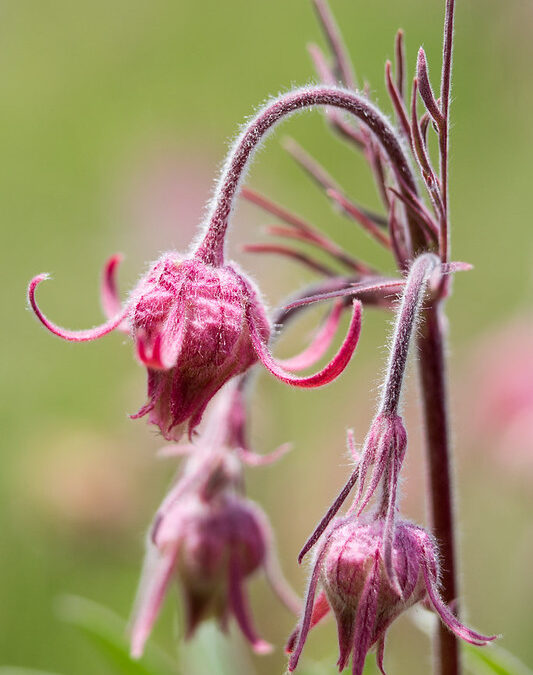
Prairie Smoke (Geum triflorum), also known as Old Man’s Whiskers or Three-Flowered Avens, is a charming native perennial prized for its ethereal, wispy seed heads and delicate nodding blooms. A true prairie gem, this low-growing plant brings architectural interest and early-season color to rock gardens, borders, and naturalized landscapes. In Southeast Wisconsin, its spring performance and wildlife value make it a must-have for gardeners seeking both beauty and ecological benefit.
Key Characteristics
-
Blooming Period
-
Flowers appear in mid-to-late spring (May–June).
-
Each stem bears three pendulous, bell-shaped blossoms that transition from rosy pink buds to soft lavender-pink petals.
-
Foliage & Habit
-
Basal clump of finely cut, fern-like leaves (4–6″ tall).
-
Flower stalks rise 8–12″ above the foliage, creating a veil of blooms.
-
After flowering, the reflexed sepals and elongated styles form “smoke-like” plumes up to 8″ long.
-
Size & Spread
Cultural Requirements
-
Light
-
Soil
-
Prefers well-drained, gritty or sandy soil.
-
Tolerates average garden soil but does not like heavy clay or prolonged wetness.
-
Incorporate organic matter or coarse sand for improved drainage.
-
Water
-
Water regularly during establishment.
-
Once settled, Prairie Smoke is drought-tolerant and seldom needs supplemental irrigation.
-
Hardiness
Landscape Uses & Companion Plants
Seasonal Care & Maintenance
-
Division & Propagation
-
Divide every 3–4 years in early spring before new growth begins.
-
Lift entire clumps, separate offsets, and replant at the same depth.
-
Deadheading & Seed Management
-
Fertilization
-
Light feeder: apply a thin layer of compost in spring.
-
Avoid high-nitrogen fertilizers, which can promote floppy growth.
-
Pest & Disease
-
Winter Protection
-
In colder sites, a light mulch over the crown helps prevent heaving.
-
Remove mulch in spring as shoots emerge.
Ecological & Garden Benefits
-
Wildlife Magnet: Early blooms provide vital forage for emerging pollinators, while the unique seed plumes offer interest and structure.
-
Low-Maintenance: Drought-tolerant once established and resistant to most pests and diseases.
-
Naturalizing: Slow self-seeder that fills in open areas, creating a graceful meadow effect over time.
Conclusion & Availability
Prairie Smoke (Geum triflorum) is an enchanting addition to any Southeast Wisconsin garden, offering spring blooms, architectural seed heads, and wildlife value. Its adaptability to well-drained sites and minimal care requirements make it ideal for rock gardens, native plantings, and mixed borders alike.
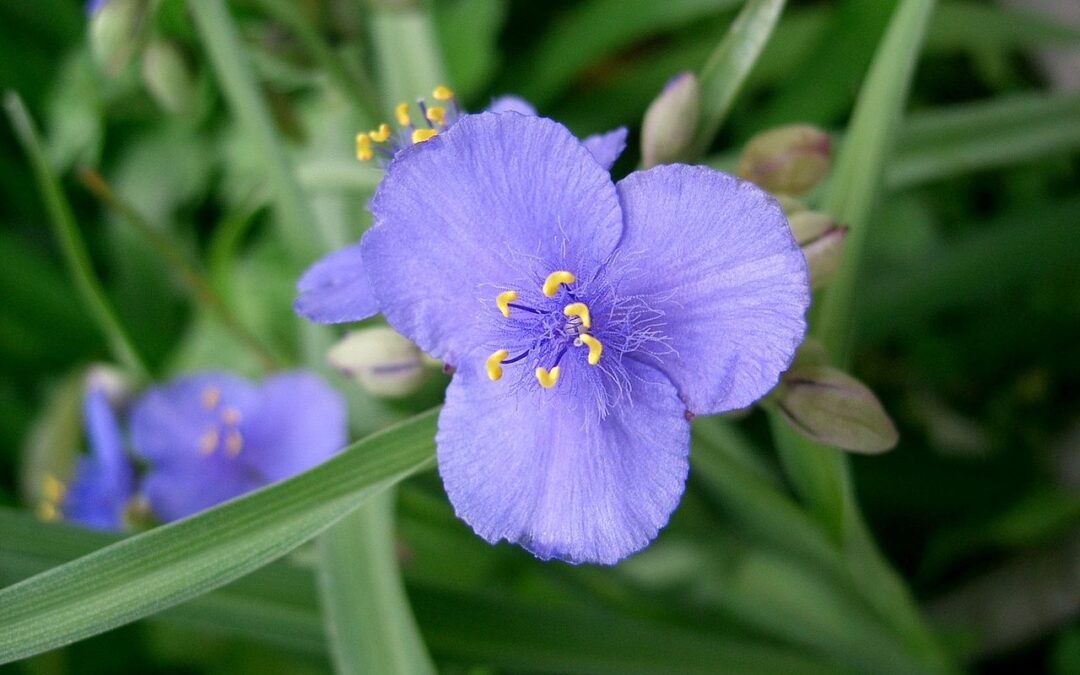
Ohio Spiderwort (Tradescantia ohiensis) is a graceful, clump-forming perennial native to prairies and open woodlands across the Midwest. With its arching, grass-like foliage and delicate clusters of three-petaled violet-blue flowers, Spiderwort adds a soft, naturalistic touch to borders, cottage gardens, and native-plant landscapes. This spring-to-early-summer bloomer not only provides weeks of color but also attracts bees and butterflies, making it a valuable addition for gardeners seeking both beauty and biodiversity.
Key Characteristics
-
Flowering
-
Blooms from late May through July
-
Flowers open in the morning and often close by afternoon
-
Petals: three broad, triangular, violet-blue with yellow stamens
-
Foliage & Habit
-
Basal clumps of narrow, arching leaves (12–24″ tall)
-
Grass-like blades folded along the midrib, giving an elegant, upright texture
-
Mature clump spreads to about 18–24″ across
-
Seasonal Interest
-
Striking flower display in late spring/early summer
-
Attractive seed pods follow, adding textural interest
-
Foliage remains attractive through summer; may benefit from a cut-back if foliage flags in late season
Cultural Requirements
-
Light
-
Thrives in full sun to light shade
-
In hot afternoon sun (zones 5–7), morning sun with afternoon shade helps preserve flower longevity
-
Soil
-
Prefers moist, well-drained soil
-
Tolerates average garden soil; benefits from organic matter
-
Avoid waterlogged conditions—good drainage is essential
-
Water
-
Keep soil evenly moist during establishment
-
Once established, moderately drought-tolerant but performs best with supplemental water in dry spells
-
Mulch around clumps to conserve moisture and suppress weeds
-
Hardiness
Landscape Uses & Companion Plants
-
Naturalized Meadows & Pollinator Gardens
-
Combine with native grasses (e.g., Little Bluestem, Sporobolus heterolepis) for a prairie effect
-
Mix with other spring-blooming natives: Coneflower (Echinacea purpurea), Wild Bergamot (Monarda fistulosa), and Black-eyed Susan (Rudbeckia hirta)
-
Cottage & Cutting Gardens
-
Pair with soft-textured perennials like Astilbe, Foxglove (Digitalis purpurea), and Salvia
-
Use in mixed borders to bridge early-season shrubs and midsummer perennials
-
Containers & Small Spaces
-
Plant in troughs or large pots with companions such as Heuchera ‘Palace Purple’ or Dianthus barbatus
-
Provide height and a delicate, airy presence
Seasonal Care & Maintenance
-
Division & Planting
-
Deadheading & Cleanup
-
Remove spent flowers to encourage tidier appearance; note that new blooms tend to open daily for several weeks
-
In autumn, cut back dead foliage to ground level after the first hard frost
-
Fertilization
-
Apply a balanced, slow-release granular fertilizer in early spring as new growth emerges
-
Avoid overfertilizing, which can lead to floppy growth
-
Pest & Disease Management
-
Winter Protection
-
In colder zones, add a light layer of mulch over the crown after ground freezes to insulate roots
-
Remove mulch in early spring to prevent rot
Why We Love Spiderwort at Heritage Hill Nursery
-
Low-Maintenance Beauty: With minimal pruning and moderate water needs, Spiderwort rewards gardeners with a reliable, long-lasting bloom.
-
Wildlife Magnet: Its morning-opening flowers are irresistible to native bees, making it an excellent choice for pollinator-friendly landscapes.
-
Versatility: Whether planted in a meadow mix, border, or container, Ohio Spiderwort complements a wide palette of perennials and grasses.





